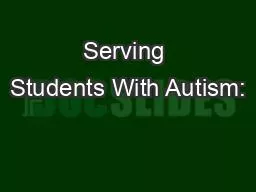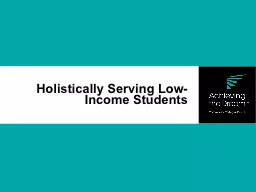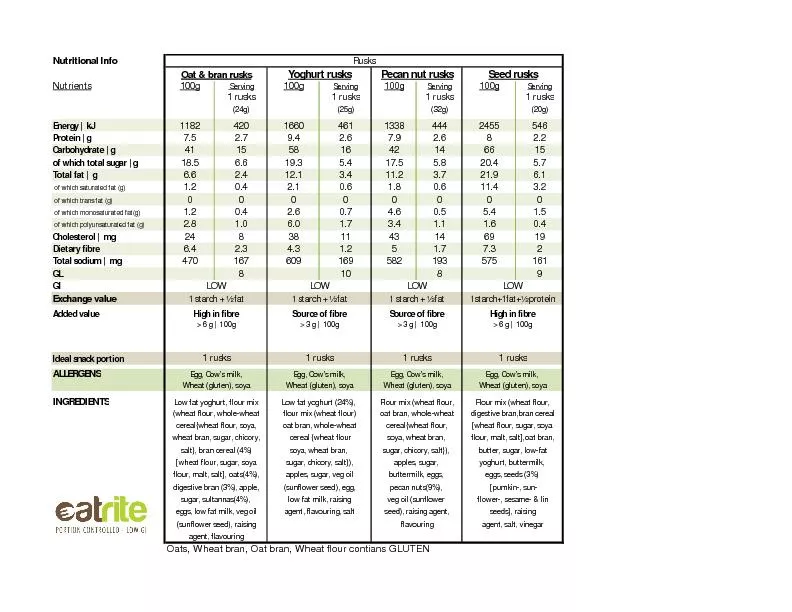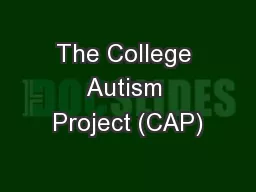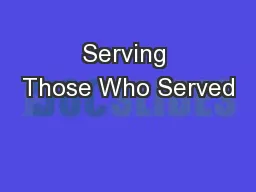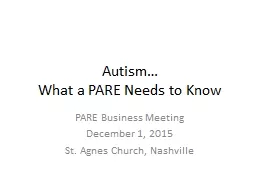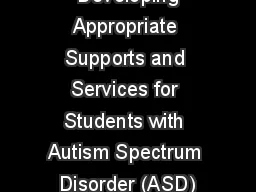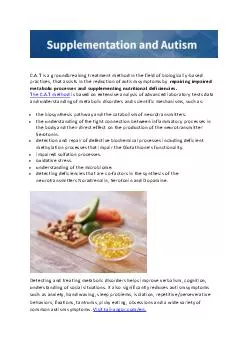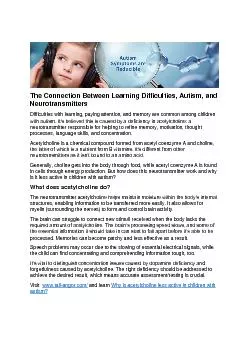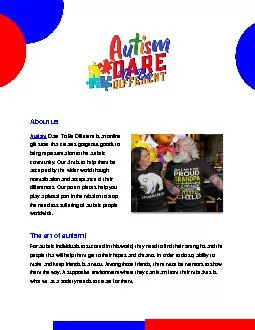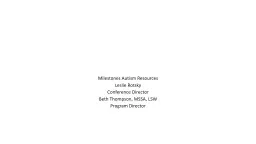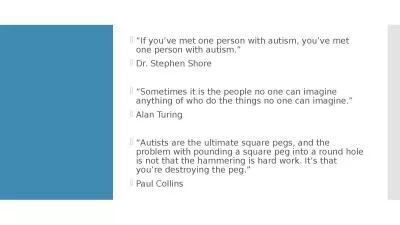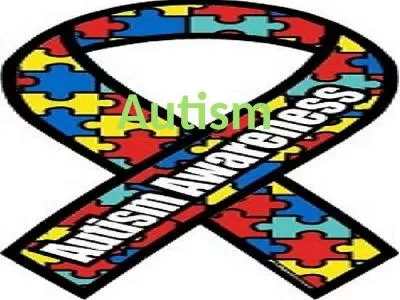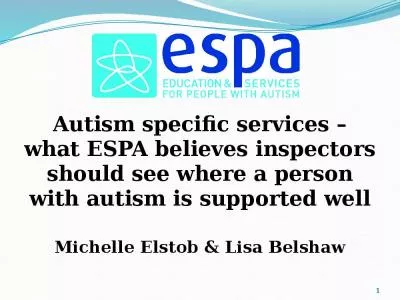PPT-Serving Students With Autism:
Author : verticalbikers | Published Date : 2020-06-23
Strategies For Inclusion Engagement amp Success Missouri State University September 14 2018 Brad Cox Founder and Executive Director Lee Burdette Williams Director
Presentation Embed Code
Download Presentation
Download Presentation The PPT/PDF document "Serving Students With Autism:" is the property of its rightful owner. Permission is granted to download and print the materials on this website for personal, non-commercial use only, and to display it on your personal computer provided you do not modify the materials and that you retain all copyright notices contained in the materials. By downloading content from our website, you accept the terms of this agreement.
Serving Students With Autism:: Transcript
Download Rules Of Document
"Serving Students With Autism:"The content belongs to its owner. You may download and print it for personal use, without modification, and keep all copyright notices. By downloading, you agree to these terms.
Related Documents

